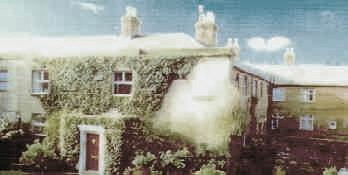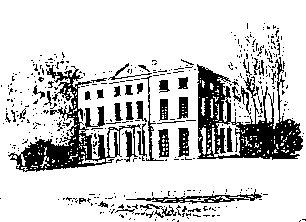![]()
|
|
It is possible to glimpse
the erstwhile splendours of Lythwood Hall through a study of plans, old
maps and remains. Joshua Blakeway, the 18thC owner and developer, was
unable, due to bankruptcy, to carry out the landscaping drawn up for him
by the famous Wm. Emes, (contemporary of Capability Brown) in 1776.
This, modified, became the endeavour of wealthy Thomas Parr, who
inherited the plans in 1804 and, 14 April 1815 (two months before
Waterloo), paid a Mr A Hitchcock one guinea for 'Plan and Measurement'
of Parrs Pool (with two islands).
The 'Desirable Freehold Estate' of 218 acres was advertised in 1848. It was 'surrounded by park-like lawns of c.70 acres, studded with venerable Oak, Elm, Chestnut, and other ornamental trees'. (The 1881 O.S. 25' map pin-points most of these!). There was 'An excellent kitchen garden with lofty walls well clothed with fruit trees, a greenhouse, pleasure ground and shrubbery; ornamental pieces of water both in front and back of the house, well-stored with fish. Screened by intervening trees, were the farm house and buildings, two lodges, and four cottages on the confines of the Estate.' (Also screened were the humbler cottages, mostly miners’, at Pulley Common!) .This description underrates the true stateliness of the area. For example; almost pristine remains of the stone-revetted Ha-Ha exist, together with large sections of its Iron Hurdle fencing. The lofty-walled 'Kitchen Garden' included a box hedged Knot Garden, possibly formally designed as a coat of arms. (Exhaustive checks failed to identify the family). There were, probably, two greenhouses; 96ft x 16ft and 55ft x 12ft (possibly a vinery); both heated. The sub-circular garden wall, an elaborate sun dial, water pump, and white marble pedestals (?) for wayside urns, survived into the 20thC. An elegant conservatory and an elevated garden house (viewing point) were included in the 18thC plans. Lime treated 'soils’ and stable manure were available. Household vegetables were available from local cottagers gardens in 1804, but census returns reveal George Mapp, Gardener, living at the Hall in 1841. There is environmental evidence for the following fruits:- cherry, walnut, sweet chestnut, pear and apple. There was a magnificent walled orchard in the grounds, with apples and Victoria plums, but this has since been destroyed. The Hall was purchased in 1852 by ' Squire-parson' Robert Hornby. Mainly taken from notes from the Bayston Hill Village Association Magazine: |


